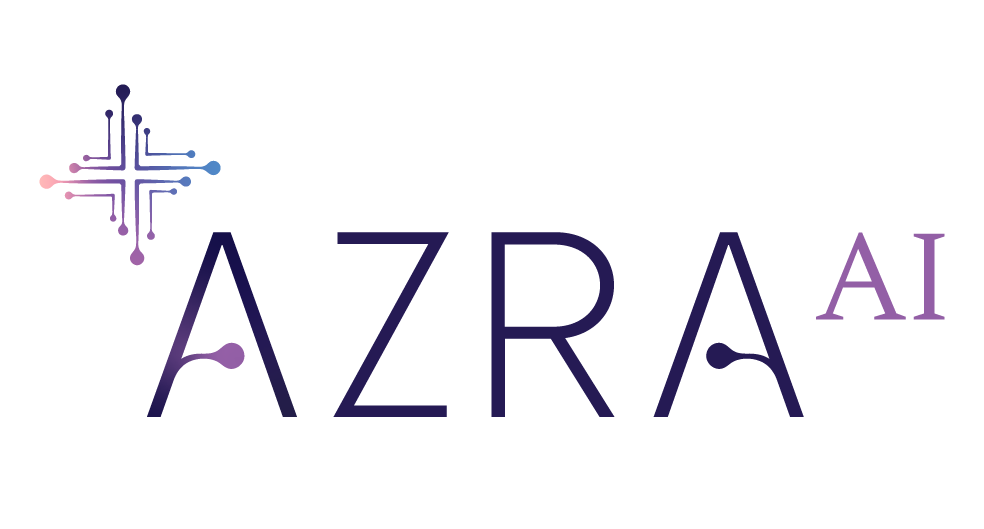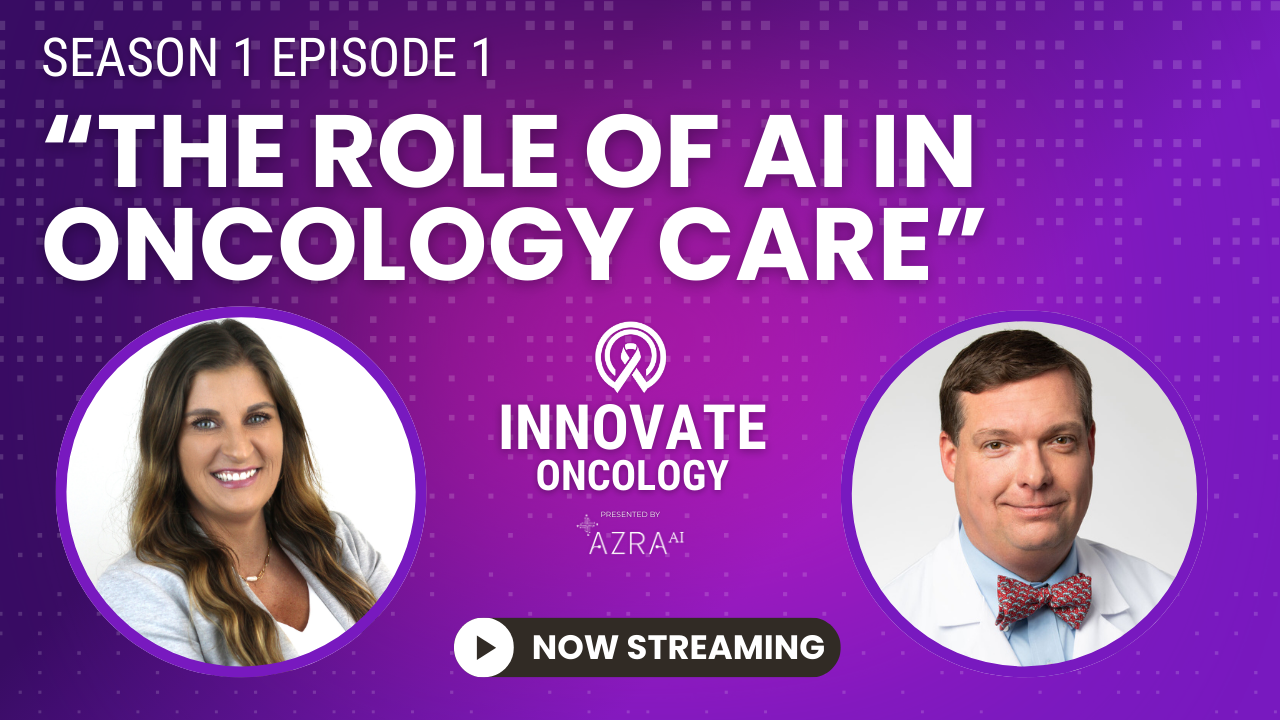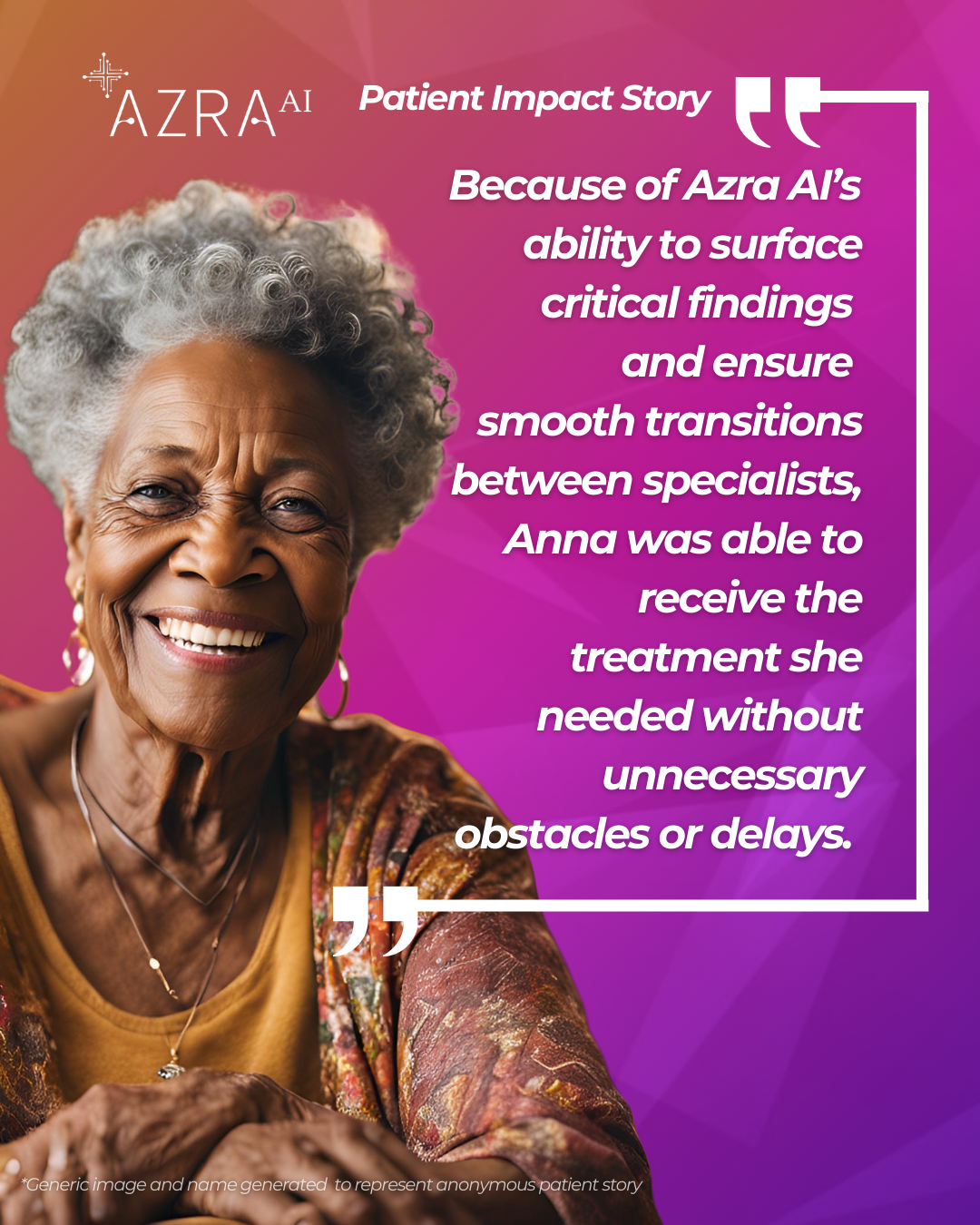By Chris Cashwell, CEO and founder of Azra AI
For cancer patients and their loved ones, days, weeks, and months matter. In fact, anyone who has waited anxiously for test results or a treatment regimen to begin can attest that hours, or even minutes, will drag on with emotional heaviness. From a clinical standpoint as well, time to treatment significantly impacts outcomes. All suspected cancers should be ruled out or confirmed with a diagnosis so treatment can begin as soon as possible. Similarly, patients with incidental findings—masses or lesions detected by an imaging exam performed for an unrelated reason—who require follow-ups must not fall through the cracks of the system.
Unfortunately, in the complex and overburdened healthcare environment, cancer patients often have difficulty navigating the unfamiliar, leading to unnecessary delays in care. These delays can result in poorer outcomes, more complicated and expensive care, and reduced life expectancies. Today’s patients require insight, attention, tracking, support, collaboration, guidance, communication and much more, while the healthcare industry, like others, is short on human labor. Despite the evolution of clinical solutions that successfully treat or manage many common forms of cancer, most of the navigational challenges that lead to poor outcomes cannot be remedied by manually adding more workers or resources. Fortunately, artificial intelligence (AI) applications are disrupting persistent patterns of delays and flagging patients who require follow-up care and streamlining those recently diagnosed with cancer to get on the optimal treatment path right away.
Surfacing, re-surfacing patients
Patients who undergo an imaging exam and found to have an unrelated, suspicious abnormality on their scan often require follow-up to track the lesion or mass over time. Unfortunately, only about 30% of these patients follow up on those recommendations in a timely manner. Some may not be informed about the results, while others are unclear about next steps. There is a broad uncertainty in the clinical realm about responsibility in tracking the progression of these findings. Realistically, there is not enough human labor or even infrastructure to review and follow the radiology report of every patient with an incidental finding in a central location.
With missed patient follow-ups, potential cancers have time to grow and worsen. Further, health equity disparities often exacerbate the impact of “forgotten” incidental findings. For people who experience challenges in care access, health literacy, familial support, or financial hardship, following up on non-urgent healthcare recommendations can prove difficult. AI applications can also identify these patients to ensure the significance of the finding has been adequately communicated. From there, a trusted clinician or navigator can guide the patient to take important next steps of care.
Similarly, patients experiencing the trauma of a cancer diagnosis may become overwhelmed by the shock of the news, then the number of tasks to execute. AI assists by automatically reviewing structured data in patient charts, identifying those most at risk for fast disease progression, and can classify cancer subsets for triaging a quicker, more efficient start of treatment.
Coordinating oncology care
Fortunately, nine out of 10 suspicious lesions are found to be benign. Of course, clinicians must assess each of these potential cancers, reviewing the pathology report carefully and categorizing the cancer, if malignant. It takes the clinician 1.5 to 2 minutes to review each report. Over time, this accumulates to thousands of hours of labor resources. For breast, lung and gastrointestinal cancer patients, nurse navigators historically spend the majority of their hours, or 65% of their time, data mining to identify new patients for navigation.
Clinicians also must assess the severity of the cancer and, knowingly or not, they’re deciding on the acuity and sickness of each patient, compared to others presenting to initiate next steps of care. The patient’s possible paths will drastically vary based on these identifications and overall assessments, and it takes a lot of time for humans to make such determinations at scale. Will a particular patient first see a surgical oncologist, a medical oncologist, or a radiation oncologist based on the diagnosis? Will another patient begin with bloodwork, or an MRI or CT scan?
Eliminating the time-consuming nature of this manual decision is possible by applying AI in cancer patient identification and classification. Using AI, patients positive for malignancy are flagged, their cancer designated as one of 20 primary types, and are then routed to a clinician who specializes in navigation by the cancer type who can drive the process immediately. Through identification of multiple data elements within the diagnosis, AI may also flag candidates for specific treatments or clinical trials, putting them on a treatment path much sooner. For example, with Azra’s AI technology, providers are experiencing a reduction in time to treatment of six days, improving both recovery and mortality rates for patients overall.
Realizing gains
Patients are not the only ones experiencing the benefits of AI application. Care providers are enjoying stronger patient and staff retention with use of AI in care administration. Patients who are identified as requiring next steps of care are executing recommendations via targeted and guided support, improving survivorship and provider loyalty. Thanks to AI, clinical staff, particularly nurses and nurse navigators, are realizing a reduced workload burden. Instead of combing through pathology reports of entire patient populations to identify positive patients and their cancer characteristics, AI is completing results review in a fraction of a second, bringing to light which patients require immediate attention and notifying referring physicians. Nurses are able to spend much more one-on-one time with established patients, providing emotional and navigational support as opposed to working on identification and data-mining tasks. Using Azra AI, nurses spend about 70% of their time directly with patients, compared to the 35% of hours they previously spent while also tasked with manually identifying patients for treatment. Staff satisfaction remains high with the AI application as it allows nurses to spend more energy engaging in rewarding patient interactions.
In a tight labor market, technology has the potential to bring relief and streamline inefficiencies to create smoother care paths for patients. AI-based solutions are changing the face of cancer care and complementing the value of clinician strengths to ensure the right care is provided for the right patient at the right time.




